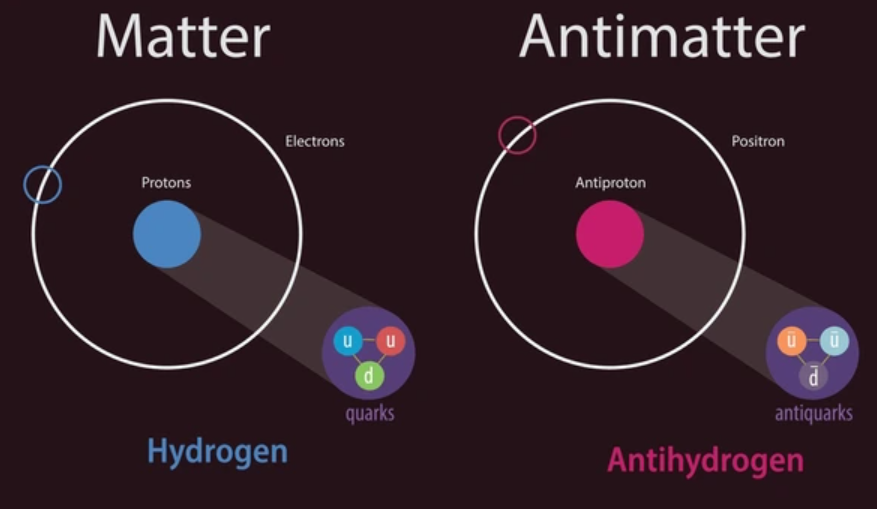
Table of Contents
ToggleWhat is Antimatter: Everything You Need to Know
Have you ever wondered about the mysterious substance that is the mirror image of everything we know? Imagine a world where every particle has a counterpart with opposite charge—a realm where matter and its opposite engage in a cosmic dance that holds the secrets of the universe. In this comprehensive guide, we’ll explore what is antimatter, diving deep into its definition, history, key properties, and applications. Whether you’re a student, science enthusiast, or simply curious about the fabric of reality, this article will equip you with everything you need to know about antimatter.
Table of Contents
- Introduction: The Enigma of Antimatter
- Defining Antimatter: What Is Antimatter?
- Historical and Contextual Background
- In-Depth Exploration: The Mechanics and Properties of Antimatter
- Importance, Applications, and Benefits
- Common Misconceptions and FAQs
- Modern Relevance and Current Trends
- Conclusion: Embracing the Mysteries of Antimatter
- Additional Resources and Further Reading
1. Introduction: The Enigma of Antimatter <a name=”introduction”></a>
Imagine a universe where every particle of matter has an exact opposite—an antimatter twin that is identical in mass but opposite in charge and other properties. This isn’t just science fiction; it’s a fundamental concept in modern physics that challenges our understanding of the cosmos. What is antimatter? It is a mysterious, often misunderstood counterpart to the matter that makes up everything we see around us.
Did you know?
Antimatter is so rare in our universe that if even a tiny bit of it comes into contact with matter, the two annihilate each other in a burst of energy. This fact has profound implications—not only for theoretical physics and cosmology but also for practical applications like medical imaging and potentially revolutionary energy sources.
In this guide, we will:
- Offer a straightforward definition of what is antimatter.
- Explore the historical evolution of the antimatter concept from early theoretical predictions to cutting-edge experiments.
- Break down the essential properties and characteristics that define antimatter.
- Examine real-world examples, case studies, and experiments that illustrate how antimatter is produced, detected, and applied.
- Discuss the importance and benefits of antimatter in science, medicine, and technology.
- Address common misconceptions and answer frequently asked questions about antimatter.
- Look into modern relevance and current trends in antimatter research and its potential future applications.
By the end of this post, you will have a deep and nuanced understanding of what is antimatter, why it is a subject of both scientific fascination and practical importance, and how it continues to shape our view of the universe.
2. Defining Antimatter: What Is Antimatter? <a name=”definition”></a>
A Straightforward Definition
At its most basic, antimatter is the term used to describe material composed of antiparticles, which are the mirror images of the particles that make up normal matter. For every particle in the Standard Model of particle physics, there exists a corresponding antiparticle with the same mass but opposite charge and quantum numbers. For example:
- The positron is the antimatter counterpart of the electron.
- The antiproton is the antimatter version of the proton.
- Antineutrons mirror neutrons, though they carry no charge, they have opposite magnetic moments.
Essential Characteristics
When answering what is antimatter, it is crucial to highlight its defining characteristics:
- Opposite Properties: Antiparticles have the same mass as their corresponding particles but opposite electric charge and other properties like baryon number and lepton number.
- Annihilation: When matter and antimatter meet, they annihilate each other in a burst of energy, often in the form of high-energy photons (gamma rays). This process is governed by Einstein’s famous equation, E = mc².
- Rarity in the Universe: Although antimatter is predicted to be created in equal amounts with matter during the Big Bang, our observable universe appears to be overwhelmingly composed of matter. This asymmetry remains one of the most significant puzzles in cosmology.
- Creation in Laboratories: Despite its rarity in nature, scientists have successfully created and trapped antimatter in particle accelerators and specialized containment systems for research purposes.
Understanding these features provides a clear answer to what is antimatter and lays the groundwork for exploring its complex role in modern science.
3. Historical and Contextual Background <a name=”history”></a>
3.1 The Origins of the Concept <a name=”origins”></a>
The idea of antimatter has its roots in the early 20th century:
- Paul Dirac’s Prediction:
In 1928, the British physicist Paul Dirac formulated a theory that combined quantum mechanics with special relativity. His famous Dirac equation predicted the existence of particles with the same mass as electrons but with opposite charge—what we now call positrons. - Early Experimental Confirmation:
In 1932, Carl Anderson discovered the positron while studying cosmic rays, confirming Dirac’s prediction and marking the first experimental observation of antimatter.
3.2 Milestones in Antimatter Research <a name=”milestones”></a>
Since the early discoveries, several milestones have propelled our understanding of antimatter:
- Antiproton Discovery:
In 1955, scientists at the University of California, Berkeley, discovered the antiproton, further validating the existence of antimatter. - Advancements in Particle Physics:
Throughout the mid-20th century, research at particle accelerators around the world led to the discovery of various antiparticles, reinforcing the concept of a symmetric world of matter and antimatter. - Modern Experiments at CERN:
In recent decades, facilities like the European Organization for Nuclear Research (CERN) have made groundbreaking strides in antimatter research. The Antiproton Decelerator (AD) at CERN, for instance, has allowed scientists to produce, trap, and study antimatter with unprecedented precision. - Cosmological Implications:
The apparent scarcity of antimatter in the universe has led to intense theoretical and experimental research in cosmology, with scientists seeking to understand the asymmetry between matter and antimatter—a phenomenon that remains one of the great mysteries of modern physics.
Historical Anecdote:
One of the most compelling historical episodes in antimatter research is the “antimatter factory” at CERN, where advanced techniques have allowed researchers to create and store minute quantities of antimatter in electromagnetic traps. These experiments not only validate fundamental physics theories but also open the door to potential future applications, such as antimatter-based propulsion systems for space exploration.
This historical context enriches our understanding of what is antimatter, showing that it has been a central focus of scientific inquiry for nearly a century, and remains a vibrant area of research today.
4. In-Depth Exploration: The Mechanics and Properties of Antimatter <a name=”exploration”></a>
To answer what is antimatter in full, we must delve into its physical properties, how it is created, and how it behaves in various contexts. This section breaks down the critical components of antimatter analysis.
4.1 Fundamental Properties of Antimatter <a name=”properties”></a>
Antimatter possesses several unique properties that differentiate it from normal matter:
- Particle-Antiparticle Duality:
Every particle has a corresponding antiparticle. These pairs share the same mass and spin but have opposite electric charges and other quantum numbers. - Annihilation Process:
When a particle and its antiparticle meet, they annihilate each other, converting their mass into energy, typically in the form of gamma rays. For example, when an electron meets a positron, the result is the production of two gamma-ray photons. - Stability in Isolation:
Antimatter can exist stably when isolated from normal matter. However, since the universe is overwhelmingly made of matter, antimatter must be created and contained under highly controlled conditions. - Symmetry and Asymmetry:
The laws of physics, as currently understood, are mostly symmetric with respect to matter and antimatter. Yet, the observable universe shows a puzzling asymmetry, with far more matter than antimatter—a problem known as baryon asymmetry.
4.2 How Antimatter Is Produced and Detected <a name=”production-detection”></a>
Producing and detecting antimatter are among the greatest challenges in modern physics. Here’s how scientists approach these tasks:
Production Methods
- Particle Accelerators:
High-energy collisions in particle accelerators create pairs of particles and antiparticles. The energy involved in these collisions is converted into mass, forming both matter and antimatter. - Cosmic Rays:
Natural cosmic rays colliding with atoms in the Earth’s atmosphere produce small quantities of antimatter, such as positrons, which can be detected by specialized instruments. - Nuclear Reactions:
Certain nuclear reactions, including those in radioactive decay, also produce antimatter, albeit in very small amounts.
Detection Techniques
- Magnetic Traps:
Scientists use magnetic fields to confine antimatter particles, preventing them from coming into contact with matter and annihilating. These devices, such as Penning traps, are crucial for studying antimatter properties. - Gamma-Ray Detection:
The annihilation of matter and antimatter produces gamma rays, which can be detected using scintillation counters and other advanced sensors. - Spectroscopy:
Techniques like laser spectroscopy are employed to measure the energy levels of antimatter atoms, providing insights into fundamental physical constants and symmetries.
4.3 Theoretical Implications and Particle Physics <a name=”theory”></a>
Antimatter is not just a curiosity; it has profound implications for our understanding of the universe:
- Testing Fundamental Theories:
Antimatter experiments provide critical tests of the Standard Model of particle physics. They help verify whether the laws of physics are truly symmetrical and allow scientists to search for new phenomena. - Antimatter and the Big Bang:
According to current cosmological theories, matter and antimatter were created in equal amounts during the Big Bang. The fact that our observable universe is dominated by matter remains a major unsolved problem in physics. - Potential for New Physics:
Any deviation from expected behaviors in antimatter experiments could hint at new physics beyond the Standard Model, including insights into dark matter, extra dimensions, or novel interactions.
4.4 Antimatter in the Cosmos <a name=”cosmos”></a>
Antimatter is not only a laboratory curiosity but also plays a role in the broader cosmos:
- Astrophysical Phenomena:
In space, antimatter is produced in high-energy events such as supernovae, pulsars, and near black holes. Observations of gamma rays from these events provide indirect evidence of antimatter. - Cosmic Rays:
Detectors on satellites and high-altitude balloons monitor cosmic rays for traces of antimatter, contributing to our understanding of both astrophysics and fundamental particle interactions. - The Quest for Cosmic Asymmetry:
Understanding why the universe is predominantly made of matter—and where all the antimatter went—is a central question in cosmology. Research in this area has led to the development of sophisticated space-based observatories and experiments.
These detailed explorations shed light on the complexities of antimatter and help answer the question what is antimatter by revealing its inner workings, its role in the natural world, and its broader scientific significance.
5. Importance, Applications, and Benefits <a name=”importance”></a>
Understanding what is antimatter is not just an academic pursuit; it has significant implications across various fields of science, technology, and even philosophy. Let’s explore why antimatter matters and how it impacts our world.
5.1 Applications in Medicine and Technology <a name=”applications-medicine”></a>
- Medical Imaging:
One of the most practical applications of antimatter is in Positron Emission Tomography (PET) scans. In a PET scan, positrons (the antimatter counterparts of electrons) are used as tracers to detect metabolic activity in tissues. When positrons encounter electrons in the body, they annihilate, emitting gamma rays that are captured to form detailed images of the internal organs. This technology is invaluable in diagnosing cancer, monitoring brain activity, and assessing heart function. - Material Science and Nanotechnology:
Antimatter research has led to advances in materials science. Techniques developed to trap and manipulate antimatter have applications in studying material properties at the nanoscale. Understanding matter-antimatter interactions also helps scientists explore new materials with unique electronic and magnetic properties. - Energy Research:
Theoretically, antimatter holds the promise of being one of the most energy-dense substances known. When matter and antimatter annihilate, they convert 100% of their mass into energy, according to Einstein’s equation E = mc². Although harnessing this energy safely and efficiently is still far from practical, it remains a tantalizing prospect for future energy sources and even advanced space propulsion systems.
5.2 Scientific Research and Cosmology <a name=”applications-science”></a>
- Testing the Foundations of Physics:
Antimatter experiments are critical for verifying the predictions of the Standard Model of particle physics. They help scientists understand whether the fundamental forces and particles behave symmetrically, or if there are subtle differences that could hint at new physics. - Exploring the Big Bang and Cosmic Evolution:
The question of why the universe contains more matter than antimatter (baryon asymmetry) is one of the most significant puzzles in cosmology. Research in this area has profound implications for our understanding of the early universe, the evolution of cosmic structures, and the ultimate fate of the cosmos. - Particle Accelerators and High-Energy Physics:
Facilities like CERN use antimatter to study high-energy particle collisions, which mimic conditions shortly after the Big Bang. These experiments provide insights into the fundamental forces of nature and help uncover particles that could lead to breakthroughs in our understanding of the universe.
5.3 Societal and Philosophical Implications <a name=”applications-society”></a>
- Ethical Considerations:
The study and potential application of antimatter raise ethical questions. For instance, if antimatter were to be harnessed as an energy source, how would we ensure its safe use? What are the risks of accidental matter-antimatter annihilation? These questions force us to consider the responsibilities that come with scientific advancement. - Inspiring Future Generations:
The mystery and wonder of antimatter capture the imagination of people around the world. From science fiction to educational outreach, the concept of antimatter inspires new generations to pursue careers in science, technology, engineering, and mathematics (STEM). - Economic and Strategic Interests:
As research into antimatter progresses, it could influence economic and strategic sectors. For example, breakthroughs in energy technology or advanced propulsion systems could transform industries and even geopolitical dynamics.
The multifaceted importance of antimatter underscores why answering what is antimatter is not merely an academic exercise, but a gateway to understanding and potentially transforming our world.
6. Common Misconceptions and FAQs <a name=”faq”></a>
Despite its growing prominence, several misconceptions about antimatter persist. Let’s address some of the most common misunderstandings and provide clear answers to frequently asked questions.
6.1 Debunking Common Myths about Antimatter <a name=”debunking”></a>
- Myth 1: Antimatter is Purely Science Fiction.
Reality:
Although antimatter is often featured in science fiction, it is a real phenomenon that has been observed and studied extensively in laboratories and particle accelerators. - Myth 2: Antimatter and Matter are Completely Symmetrical.
Reality:
While the properties of particles and antiparticles are remarkably similar, the observable universe exhibits a striking asymmetry—matter overwhelmingly dominates over antimatter. This imbalance is one of the great mysteries of modern physics. - Myth 3: Antimatter is Dangerous and Uncontrollable.
Reality:
In controlled environments such as particle accelerators and specialized traps, antimatter is handled safely by highly trained scientists. Its potential dangers are well understood and managed through strict protocols. - Myth 4: Antimatter Can Be Used as an Energy Source Today.
Reality:
Although antimatter releases a tremendous amount of energy upon annihilation with matter, current technology does not allow us to produce or store antimatter in quantities that would make it a viable energy source for everyday use.
6.2 Frequently Asked Questions (FAQs) <a name=”faqs”></a>
- Q1: What is antimatter?
A1: Antimatter is material composed of antiparticles, which are the mirror images of the particles that make up normal matter. These antiparticles have the same mass as their corresponding particles but opposite charges and quantum properties. - Q2: How is antimatter created?
A2: Antimatter is produced in high-energy processes such as particle collisions in accelerators, cosmic ray interactions, and certain types of nuclear reactions. It is also generated naturally in phenomena such as radioactive decay. - Q3: What happens when antimatter meets matter?
A3: When antimatter encounters matter, they annihilate each other, converting their mass into energy, typically in the form of gamma rays. This process is highly efficient and releases a large amount of energy. - Q4: Can antimatter be used in practical applications?
A4: Yes, antimatter is currently used in medical imaging, specifically in PET scans, and is being studied for its potential in energy generation and advanced propulsion systems. However, its practical use as an energy source is still in the realm of theoretical research. - Q5: Why is there more matter than antimatter in the universe?
A5: This is one of the most significant unsolved problems in physics, known as baryon asymmetry. The prevailing theories suggest that during the Big Bang, slight differences in the behavior of matter and antimatter led to an excess of matter, but the exact mechanisms remain under investigation.
7. Modern Relevance and Current Trends <a name=”modern”></a>
The study of antimatter is not only a cornerstone of modern physics but also a rapidly evolving field with exciting new developments and implications for the future.
7.1 Cutting-Edge Research and Future Directions <a name=”research-future”></a>
- Advanced Particle Physics Experiments:
Facilities like CERN’s Antiproton Decelerator (AD) and the ALPHA experiment continue to push the boundaries of what we know about antimatter. Researchers are working to trap and study antihydrogen (the antimatter equivalent of hydrogen) to test fundamental symmetries in physics. - Antimatter in Space Exploration:
There is ongoing research into the potential use of antimatter as a propulsion mechanism for spacecraft. Antimatter engines could theoretically offer propulsion efficiencies far beyond what is possible with conventional chemical rockets, potentially enabling interstellar travel. - Quantum Computing and Fundamental Physics:
Studies of antimatter also contribute to our understanding of quantum mechanics and could have implications for the development of quantum computing and other advanced technologies. - Understanding Cosmic Asymmetry:
Future experiments aim to unravel the mystery of why the observable universe is dominated by matter. Discoveries in this area could reshape our understanding of the Big Bang and the evolution of the cosmos.
7.2 The Role of Antimatter in a Data-Driven, Technological Era <a name=”modern-tech”></a>
- Integration with AI and Big Data:
As we collect increasingly large datasets from particle accelerators and space-based observatories, artificial intelligence (AI) and machine learning algorithms are being employed to analyze antimatter interactions and detect subtle anomalies. These tools are critical in identifying patterns that could point to new physics. - Collaborative Global Research:
International collaborations are at the forefront of antimatter research. Initiatives like CERN’s experiments involve scientists from around the world, fostering a collaborative environment that accelerates discovery. - Public Engagement and Science Communication:
The captivating nature of antimatter has made it a popular subject in science communication. Documentaries, popular science books, and educational programs bring the wonders of antimatter to a broad audience, inspiring future generations of scientists and innovators.
The modern relevance of antimatter underscores its importance not only as a scientific phenomenon but also as a driver of technological innovation and international collaboration.
8. Conclusion: Embracing the Mysteries of Antimatter <a name=”conclusion”></a>
In our deep dive into what is antimatter, we have explored its definition, historical development, key properties, and wide-ranging applications. Here’s a brief recap of the key points:
- Definition and Core Characteristics:
Antimatter is composed of antiparticles—particles that mirror the properties of normal matter but carry opposite charges and quantum numbers. Its defining characteristic is the annihilation that occurs when matter and antimatter meet, releasing energy according to E = mc². - Historical Evolution:
From Paul Dirac’s theoretical predictions and the early discoveries of positrons and antiprotons to modern experiments at CERN, the study of antimatter has evolved dramatically over the past century. - Mechanics and Applications:
Antimatter is produced in high-energy environments, detected using advanced technologies, and has applications in fields such as medical imaging, material science, and potentially even energy generation and space exploration. - Modern Relevance:
Ongoing research in antimatter continues to challenge our understanding of fundamental physics, contribute to technological advancements, and inspire global scientific collaboration.
Understanding what is antimatter enriches our knowledge of the universe and pushes the boundaries of what is possible in science and technology. It is a field filled with mystery, promise, and profound implications for the future of humanity.
Call-to-Action
- Share Your Thoughts:
How has learning about antimatter changed your perspective on the universe? What questions do you still have about this mysterious substance? We invite you to leave your comments below and join the conversation. - Further Exploration:
If you enjoyed this comprehensive guide on what is antimatter, be sure to check out our other posts on particle physics, cosmology, and the future of energy. Deepening your understanding of these topics can help you appreciate the fascinating interplay between science and technology. - Stay Informed:
Subscribe to our newsletter for regular updates on cutting-edge research, insightful articles on modern physics, and exclusive content on emerging scientific trends. Let’s continue exploring the wonders of the universe together.
9. Additional Resources and Further Reading <a name=”resources”></a>
For those who wish to delve even deeper into the subject of antimatter, here are some reputable resources and further reading recommendations:
- Wikipedia – Antimatter:
Learn more about antimatter and its properties, history, and applications. - CERN – Antimatter Research:
Explore the latest developments in antimatter experiments at CERN, one of the world’s leading research centers. - Books:
- “Antimatter” by Frank Close – An engaging exploration of antimatter, its discovery, and its implications for our understanding of the universe.
- “The 4 Percent Universe” by Richard Panek – A book that touches on antimatter as part of the broader narrative of modern cosmology and physics.
- Online Courses and Lectures:
Platforms such as Coursera, edX, and Khan Academy offer courses in particle physics and cosmology that include modules on antimatter. - Scientific Journals:
Journals like Physical Review Letters and The European Physical Journal C publish peer-reviewed articles on antimatter research and related topics.
Final Thoughts
The question what is antimatter invites us into a realm of physics that challenges our intuition and expands our understanding of the universe. Far from being a mere scientific curiosity, antimatter is a vibrant area of research with profound implications for everything from medicine and materials science to cosmology and the future of energy.
By breaking down complex concepts into clear, manageable ideas, we not only demystify antimatter but also empower ourselves to think more critically about the nature of reality. Whether it’s through the lens of cutting-edge experiments at CERN or the practical applications of positron emission tomography in medicine, the study of antimatter continues to captivate our imagination and drive innovation.
If you found this guide on what is antimatter informative and thought-provoking, please share it with friends, colleagues, and anyone who loves exploring the mysteries of the universe. Your feedback and questions are invaluable—let’s continue the conversation about this fascinating subject and the endless possibilities it represents.
Happy exploring and learning!
Choose Topic
- ACT (17)
- AP (20)
- AP Art and Design (5)
- AP Physics 1 (1)
- AQA (5)
- Artificial intelligence (AI) (2)
- Banking and Finance (6)
- Biology (13)
- Business Ideas (68)
- Calculator (72)
- ChatGPT (1)
- Chemistry (3)
- Colleges Rankings (48)
- Computer Science (4)
- Conversion Tools (136)
- Cosmetic Procedures (50)
- Cryptocurrency (49)
- Digital SAT (3)
- Edexcel (4)
- English (1)
- Environmental Science (2)
- Etiology (7)
- Exam Updates (1)
- Finance (17)
- Fitness & Wellness (164)
- Free Learning Resources (210)
- GCSE (1)
- General Guides (40)
- Health (107)
- History and Social Sciences (152)
- IB (1)
- IGCSE (2)
- Image Converters (3)
- IMF (10)
- Math (43)
- Mental Health (58)
- News (9)
- OCR (3)
- Past Papers (463)
- Physics (5)
- SAT (39)
- Schools (3)
- Sciences (1)
- Short Notes (5)
- Study Guides (28)
- Syllabus (19)
- Tools (1)
- Tutoring (1)
- What is? (226)




